
Kansas is a state in the Midwestern United States. Its capital is Topeka and its largest city is Wichita. Kansas is a landlocked state bordered by Nebraska to the north; Missouri to the east; Oklahoma to the south; and Colorado to the west. Kansas is named after the Kansas River, which in turn was named after the Kansa Native Americans who lived along its banks. The tribe's name is often said to mean "people of the (south) wind" although this was probably not the term's original meaning. For thousands of years, what is now Kansas was home to numerous and diverse Native American tribes. Tribes in the eastern part of the state generally lived in villages along the river valleys. Tribes in the western part of the state were semi-nomadic and hunted large herds of bison.

Kansas State University is a public land-grant research university with its main campus in Manhattan, Kansas. It was opened as the state's land-grant college in 1863 and was the first public institution of higher learning in the state of Kansas. It has an enrollment of 16,835 students for the Fall 2021 semester.
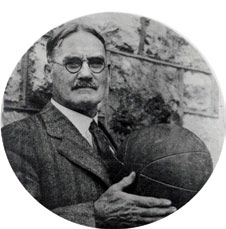
James Naismith was a Canadian-American physical educator, physician, Christian chaplain, sports coach, and inventor of the game of basketball. After moving to the United States, he wrote the original basketball rule book and founded the University of Kansas basketball program. Naismith lived to see basketball adopted as an Olympic demonstration sport in 1904 and as an official event at the 1936 Summer Olympics in Berlin, as well as the birth of the National Invitation Tournament (1938) and the NCAA Tournament (1939).

Douglas County is located in the U.S. state of Kansas. As of the 2020 census, the county population was 118,785, making it the fifth-most populous county in Kansas. Its county seat and most populous city is Lawrence.

Abilene is a city in and the county seat of Dickinson County, Kansas, United States. As of the 2020 census, the population of the city was 6,460. It is home of The Dwight D. Eisenhower Presidential Library and Museum and the Greyhound Hall of Fame.
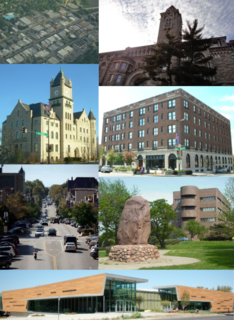
Lawrence is the county seat of Douglas County and sixth-largest city in Kansas. It is in the northeastern sector of the state, astride Interstate 70, between the Kansas and Wakarusa Rivers. As of the 2020 census, the population of the city was 94,934. Lawrence is a college town and the home to both the University of Kansas and Haskell Indian Nations University.

Lecompton is a city in Douglas County, Kansas, United States. As of the 2010 census, the population was 625.

The University of Kansas (KU) is a public research university with its main campus in Lawrence, Kansas, United States, and several satellite campuses, research and educational centers, medical centers, and classes across the state of Kansas. Two branch campuses are in the Kansas City metropolitan area on the Kansas side: the university's medical school and hospital in Kansas City, the Edwards Campus in Overland Park, a hospital and research center in the state's capital of Topeka, and a hospital and research center in Hays. There are also educational and research sites in Garden City, Hays, Leavenworth, Parsons, and Topeka, an agricultural education center in rural north Douglas County, and branches of the medical school in Salina and Wichita. The university is a member of the Association of American Universities and is classified among "R1: Doctoral Universities – Very high research activity".

Haskell Indian Nations University is a public tribal land-grant university in Lawrence, Kansas, United States. Founded in 1884 as a residential boarding school for American Indian children, the school has developed into a university operated by the U.S. Bureau of Indian Affairs that offers both associate and baccalaureate degrees. The college was founded to serve members of federally recognized Native American tribes in the United States. It is the oldest continually operating federal school for American Indians.

The Midland Theatre, known officially for sponsorship purposes as Arvest Bank Theatre at the Midland, is a 3,200-seat theater located in the Power & Light District of Kansas City, Missouri, United States. The National Collegiate Athletic Association under Walter Byers had its headquarters in the building from the 1950s until it moved to 6299 Nall Avenue at Shawnee Mission Parkway in Mission, Kansas in 1971. The theatre was originally known as the Loew's Midland Theatre until 1961. Over the years, the theatre has been known by various names including: Saxon Theatre, Midland Stadium, Midland 1-2-3 Theatre, Midland Theatre and The Midland by AMC.

The University of Kansas Natural History Museum is part of the University of Kansas Biodiversity Institute, a KU designated research center dedicated to the study of the life of the planet.
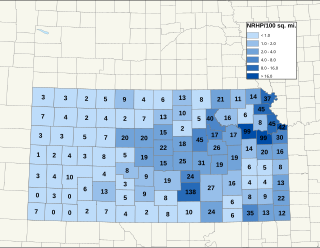
There are over 1,400 buildings, sites, districts, and objects in Kansas listed on the National Register of Historic Places in Kansas. NRHP listings appear in 101 of the state's 105 counties.

Ellis Fuller Lawrence was an American architect who worked primarily in the U.S. state of Oregon. In 1914, he became the co-founder and first dean of the University of Oregon's School of Architecture and Allied Arts, a position he held until his death.

Mount Oread is a hill in Lawrence, Kansas upon which the University of Kansas, and parts of the city of Lawrence, Kansas is located. It sits on the water divide between the Kansas River and the Wakarusa River rivers. It was named after the long defunct Oread Institute in Worcester, Massachusetts, where many of the settlers of Lawrence moved from prior to the American Civil War. The hill was originally called Hogback Ridge by many Lawrence residents until the Oread name was adopted in 1864, two years after the university was founded.
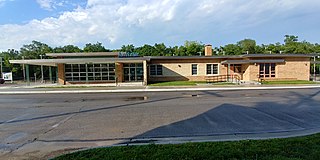
Lawrence is a train station in Lawrence, Kansas, United States, served by Amtrak's Southwest Chief train. The Lawrence station was built in 1956 by the Atchison, Topeka and Santa Fe Railway to replace the Atchison Topeka Santa Fe Station built in 1883 which was damaged by the 1951 flood. The Mid-Century Modern station has been listed on the National Register of Historic Places. From 2015 to 2019 is has been, on average, the third-most-frequented Amtrak station in Kansas; however, in 2019 it passed Topeka to reach second place.
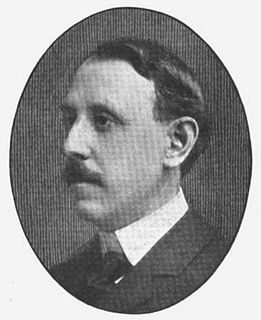
Frank Strong (1859–1934) was the third president of the University of Oregon from 1899 to 1902 and sixth Chancellor of the University of Kansas from 1902 to 1920.

Bailey Hall, at the University of Kansas in Lawrence, Kansas, was built in 1905. The architect was John G. Haskell who was among the architects of the Kansas State Capitol. It was listed on the National Register of Historic Places in 2001. As of 2013, the building is home to the Communication Studies department.
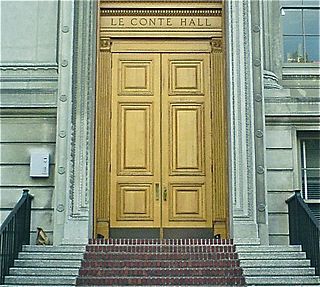
LeConte Hall is the former name of a building on the campus of the University of California, Berkeley, which is home to the physics department. LeConte Hall was one of the largest physics buildings in the world at the time it was opened in 1924, and was also the site of the first atom collider, built by Ernest O. Lawrence in 1931.

Spooner Hall was built in 1893-94 as the University of Kansas' first library building. The Richardsonian Romanesque structure was designed by architect Henry Van Brunt and built with funds bequeathed by William B. Spooner, a Massachusetts leather merchant who had a family connection to the university. As originally built, the building housed a reading room on the ground floor and meeting space on the upper level, with book stacks in a five-story section.





















